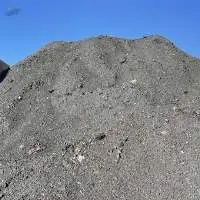
Supplier: Aluminium ( ingots, t bars, sows, rods), copper (cathodes, cakes, billets, ingots, rods), lead (ingots), nickel (cathodes both cut and uncut briquettes, pellets, discs, etc.), tin (ingots, etc.), zinc (ingots both regular size and jumbos), steel billets (all types including crc, hrc, hdgc, plates, sheets), concentrates and ores for above items including bauxite, manganese, clinker and iron ores etc), scraps of above items including hms 1&2 and steel scraps
Buyer: Aluminium ( ingots, t bars, sows, rods), copper (cathodes, cakes, billets, ingots, rods), lead (ingots), nickel (cathodes both cut and uncut briquettes, pellets, discs, etc.), tin (ingots, etc.), zinc (ingots both regular size and jumbos), steel billets (all types including crc, hrc, hdgc, plates, sheets), concentrates and ores for above items including bauxite, manganese, clinker and iron ores etc), scraps of above items including hms 1&2 and steel scraps
ANALYSIS VALUES Organoleptic Bright, clear; with absence of foreign odors and flavors Peroxide index 0.1 – 1.0 (meq O2 / Kg) Free fatty acid as oleic acid 0.03 – 0.07 (g / 100g) Lovibond color Yellow 10 – 15 (in 133.35mm cell) Red 0.6 – 1.5 (in 133.35mm cell) Unsaponifiable matter Max.: 1.00 (g / 100g) Soap Max.: 10 (ppm) Winter Test Oil will remain clear after cooling it for 24hs a 0ºC Moisture and volatile matter Max.: 0.05 (g / 100g) Impurities Will not contain naked eye Insoluble impurities Max.: 0.02 (g / 100g) Specific gravity at 25ºC 0.9133 – 0.9175 Refractive index at 25ºC 1.4706 – 1.4740 Iodine index 110 – 140 (g I2 / 100g) Saponification value 188 – 192 (mg OHK / g) Halphen – Gastaldi test Negative Linolenic acid Max.: 0.3 (as fatty acid / 100g of total fatty acids)
We hold immense expertise in making available Copper in many forms including LME registered and non registered cathodes, billets, rods, cakes, bars, foil, sheet, granules, plates, powder, shot, turnings, wire, insulated wire, mesh and “evaporation slugs”. Copper is one of the most important metals. Copper is reddish with a bright metallic lustre. It is malleable, ductile, and a good conductor of heat and electricity (second only to silver in electrical conductivity). Its alloys, brass and bronze, are very important. Monel and gun metals also contain copper. The most important compounds are the oxide and the sulphate, (blue vitriol
Supplier: Cast iron skulls, cast iron borings and turnings, steels skulls, eaf skulls, plate iron, mill scale, metal scrap, incinerated scrap (e46)
Sunflower oil Eu origin 1l,5l and 10l plastic bottles Min order : 1 truck
Our refined sunflower oil have high quality. 1 LT , 2 LT , 5 LT , 10 LT , 18 LT , FLEXI TANK Sunflower oil is used in the preparation of various dishes, homemade mayonnaise, pastries and for dressing salads. This is a universal product for use not only in cooking, but also in everyday life. In cooking.
We are glad to propose 500 MT of stain less steel mill scale. Mill scale is formed on the outer surfaces during by the hot rolling lamination of stainless-steel products. At a visual inspection the material is a hard brittle sand and is mainly composed of iron oxides, mostly ferric, and is bluish black in colour, but it also contains considerable alloying elements such as chromium and nickel. The recovery ratio after melting in furnace for the most valuable alloy elements is: - Ni: 3.5 - 4.5% - Cr: 6-8% From the chemical and physical analysis performed on the scrap, and according to the European environmental rules, the material has been classified as a special non dangerous waste, listed in green list. In particular the mill scale can be classified as follows: Waste code: 10 02 10 The material is stored on cemented flooring, and it can be loaded loose in tipper trucks or containers. Chemical analysis of the material is available on request.
Mill scale, is formed on the outer surfaces of plates, sheets or profiles when they are being produced by rolling hot iron or steel billets in rolling or steel mills. It looks like a hard brittle sand and is mainly composed of iron oxides, mostly ferric, and is bluish black in color. Being produced during the reheating, conditioning and hot rolling operation for the production of steel articles, the mill scale initially adheres to the steel surface and protects it from atmospheric corrosion, provided no break occurs in this coating. From the chemical and physical analysis performed on the scrap, and according to the european environmental rules, the material has been classified as a special non dangerous waste, listed in green list In particular the mill scale can be classified as follows: Einecs (european commission no.): 266-007-8 Waste code: 10 02 10 Basel code: b 12 30 Hs code: 2619.00




